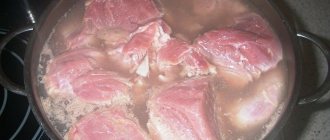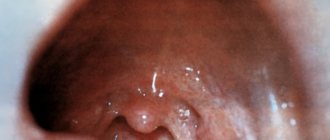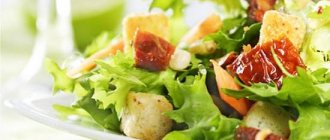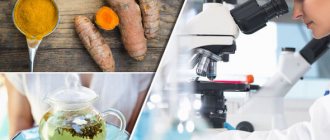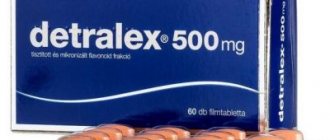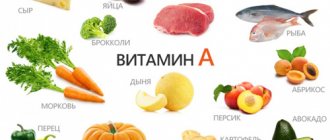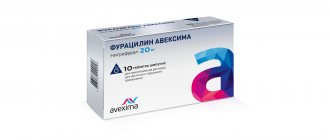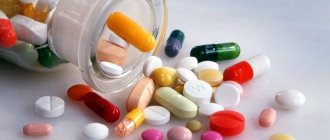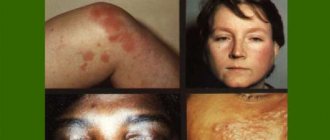Therapeutic medical diets, which are compiled by diet therapy, are part of a comprehensive treatment and are prescribed in accordance with the diagnosis. Experts in the field of nutrition therapy claim that a properly composed diet and diet of the patient are of great importance, both for recovery and for the restoration of the body.
Therapeutic diets are prescribed for functional, metabolic and other disorders. A properly selected therapeutic diet enhances the effect of therapeutic agents and is the most important measure that contributes to the healing process of the body. Medical diets help with chronic diseases when the patient experiences an exacerbation of pathology. They are also prescribed for preventive purposes, if there is a likelihood of developing any disease.
Medical diets imply not only the correct selection of products, but also compliance with processing technologies, setting the temperature and time of food intake, the volume of portions and the frequency of meals.
Pevzner's classification of therapeutic diets allows you to select and prescribe the most appropriate nutritional regimens, increasing the therapeutic effect of the treatment course.
What kind of diet is this and its basic principles
Diet Table No. 15 is very simple, its main goal is to provide the human body with nutrition that would correspond to its physiology. The caloric content, the presence of proteins, fats, and carbohydrates fully corresponds to the norms for food consumption by a healthy body. Nutrition is created according to physiological standards. This type of nutrition can be used for the everyday menu, even if we call it a diet.
Table No. 15 differs from the daily diet in that you need to monitor the balance of proteins, fats, and carbohydrates. More vitamins are introduced, which is very important during the rehabilitation of the body. There are no specific prohibitions here, but the basic nutritional requirements of the 15th Table are as follows:
- The number of meals must be observed. This is from 3 to 6 times a day, but 4 meals a day are the most acceptable.
- Eating in terms of portions is as follows: you should eat enough, but not overeat.
- Food intake per day should correspond to the amount of proteins, fats and carbohydrates, according to the ratio 1:1:4.
- Seriously reduce your daily intake of hot spices, animal fats, and foods difficult to digest.
- It is recommended to salt food while eating it, and not while cooking. The amount of salt is not limited.
- Various cooking methods are used, but frying food should be done within reason, especially in the first days.
Urolithiasis, gout
| Diet (Table, No.) | Indications | Chemical composition and energy value | Diet characteristics | Recommended products and dishes | Excluded foods and dishes |
| Table No. 6 | Gout, kidney stones with the passage of stones consisting predominantly of urates | - proteins 100g, - fats 110g; — carbohydrates 400g; — energy value 2700-3500 kcal | - exclusion of foods containing oxalic acid and purines in large quantities; - reducing salt consumption; — increased consumption of alkalizing products; - reducing protein and fat intake | - milk, dairy products, - white and black bread, - sugar, honey, - vegetarian vegetable, dairy and fruit soups - cereal products, - all sweet fruits, jam, fruit and berry juices, carrots, lettuce, cucumbers, - lemon, vinegar, bay leaf, eggs, meat, lean fish 2-3 times a week. The amount of table salt is reduced to 6-8 g. Liquid in large quantities (up to 2-3 liters), vitamins C and B1 are added. | - spicy extractive substances, - meat soups and decoctions, liver, kidneys, brains, fried, smoked meat, fried fish, fish soup, lard, herring, sardines, anchovies, sprats, sprat, pates, - mushrooms, - legumes, - sorrel , spinach, - coffee, cocoa, chocolate, - alcoholic drinks - meat, fish and mushroom broths, - sorrel and legume soups; |
Chronic and acute nephritis, chronic renal failure
Indications for prescribing the diet Table No. 15
The above nutrition can be used in the following cases:
- If your treatment does not require a special diet.
- If you do not have pathologies of the digestive system.
- When you get better, you need to switch to a normal diet.
- If you have tried any other diet and now want to go back to your normal diet.
Tuberculosis
| Diet (Table, No.) | Indications | Chemical composition and energy value | Diet characteristics | Recommended products and dishes | Excluded foods and dishes |
| Table No. 11 | Tuberculosis of the lungs, bones, lymph nodes, joints with mild exacerbation or attenuation, exhaustion after infectious diseases, operations, injuries | - proteins - 110-130 g (60% animals) - fats - 100-120 g - carbohydrates - 400-450 g - energy value - 3000-3400 kcal | - increasing the content of proteins, vitamins and minerals in the food consumed | - products made from wheat or rye flour, buns, pies, pies, cookies, etc.; - soups with richness, be it broth from mushrooms, fish or meat; milk soups - beef, pork, lamb, turkey, duck, goose, chicken and rabbit meat; — various sauces for meat dishes; - semi-fat or fatty fish, canned fish, balyk, cod liver, caviar; — high-fat dairy products, fermented milk products; - eggs; — pasta and various cereals; - vegetables with a high level of glycemic index (zucchini, corn, pumpkin, parsnips); - sweets, fruits that have a sweet and sour taste; - honey, jam and refined sugar; — salads, cold cuts or seafood; — all drinks, including decoctions of herbs and plants, varieties of compotes, tea and coffee | - fatty types of meat; — cakes, pastries with rich cream; — hot sauces, seasonings; - cooking, beef and lamb fats |
Functional diseases of the nervous system
Diet Table No. 15: what you can and cannot eat
In any case, this will be such a gentle way to transition to regular food. It will help the body transition to its usual way of life unnoticed. The diet menu at Table No. 15 is very flexible, the list of prohibited foods is small. So, it is prohibited:
- Pork lard, lard.
- Products made from soy.
- Fatty meat - pork, lamb, duck, goose.
- Flour and butter products.
- Hot spices, horseradish, mustard.
- Any alcohol.
All other foods can be consumed freely, but we are now talking about the correct regime, so there are foods that you simply must eat for your recovery.
- Wheat bread, rye bread, flour products, except baked goods.
- Various soups with different broths.
- Fish, meat dishes, seafood.
- Fried, boiled eggs, including other dishes containing eggs.
- Boiled sausages, frankfurters.
- Various cereals, pasta.
- Milk, fermented milk products.
- Vegetables, fruits, fresh vegetable dishes.
- Dried fruits.
- Various greens, fresh.
- Juices, jelly, decoctions, fruit compotes.
- Tea, coffee, jelly made with milk and water.
- Vegetable oils.
- Butter, margarine in limited quantities.
- Sauces, sweets, but it is very important to monitor the calorie content of such food.
A very gentle diet, many things are not prohibited, but it is important to choose the right foods in order to adhere to the basic principles of Table No. 15:
- eat 4 times a day;
- do not eat fatty foods;
- prohibit yourself from spicy foods, including mustard and pepper;
- drink 1.5-2 liters of water per day.
Atrophic gastritis, colitis
| Diet (Table, No.) | Indications | Chemical composition and energy value | Diet characteristics | Recommended products and dishes | Excluded foods and dishes |
| Table No. 2 | Chronic gastritis with low acidity or in its absence, chronic colitis (not exacerbation) | - proteins 90 - 100 g (60% animal), - fats 90 - 100 g (25% vegetable), - carbohydrates 400 - 420g; — energy value 2800-3000 kcal | - limiting the consumption of fried foods; - reducing the consumption of fruits and vegetables without heat treatment; - food consumed should not be hot or very cold; - meals should be fractional; — limiting salt to 12-15g per day | - soups from cereals and vegetables, pureed, in meat, mushroom, fish broths; - lean meat (chopped, fried), boiled chicken, steamed, stewed, fried cutlets without a rough crust, lean ham, lean boiled fish, well-soaked lean chopped herring, black caviar; - milk, butter, kefir, yogurt, cream, non-sour sour cream, fresh non-sour cottage cheese, mild grated cheese; - soft-boiled eggs, omelette, porridge, well boiled or mashed (buckwheat, semolina, rice); - flour dishes (except for baked goods), stale white, gray bread, uneatable crackers; - vegetables, fruits, boiled, raw, grated; fruit and vegetable juices (also sour); - tea, coffee, cocoa with water and milk, - marmalade, sugar | - fresh bread and flour products from butter dough; - pea and bean soups; - fatty meats and poultry; - smoked meats, canned food; - fatty, salted, smoked fish; - raw, ungrated and pickled vegetables, pickles, onions, radishes, radishes, bell peppers, cucumbers, garlic, mushrooms; - rough varieties of fruits and berries in raw form; - chocolate and cream products |
Constipation
Video
Now we invite you to watch a short video review of all 15 types of medical nutrition proposed by Pevzner. Dr. Dmitry Lyubarets told his viewers in simple language why they need to stick to a certain menu, what role nutrition plays in treatment, and why proper nutrition proposed by Pevzner is good. Watch the video - you will definitely find a lot of useful information for yourself.
Dear readers, we bring to your attention other possible diet options presented on our website.
- Find out what your diet should be if you have a stomach ulcer. By adhering to it, you can speed up the healing process.
- With cholecystitis, it is very important to adhere to a strict menu in order to restore the functioning of the gallbladder. Food for this disease is prepared in such a way that the load on the digestive system is minimal.
- It is also very important for people suffering from hemorrhoids to adhere to a certain diet in order to normalize stools and not irritate the intestines with spicy, salty or fatty foods.
- —In case of poisoning—it is very important to adhere to a certain diet for a long period in order to restore intestinal flora. It is necessary to drink large amounts of fluid.
Share your feedback, comments, additions to the above information. Have you ever had an illness that required you to adhere to a certain diet? Do you think your health has improved thanks to this meal?
Author of the publication
Diseases of the cardiovascular system
| Diet (Table, No.) | Indications | Chemical composition and energy value | Diet characteristics | Recommended products and dishes | Excluded foods and dishes |
| Table No. 10 | Diseases of the cardiovascular system with circulatory failure grades I-IIA | - proteins - 90 g (55-60% animal) - fats - 70 g (25-30% vegetable) - carbohydrates - 350-400 g - energy value 2500-2600 kcal | - slowing down the development of atherosclerosis; — reduction of metabolic disorders; - improved blood circulation; - reduction of blood cholesterol and excess body weight; - reducing the content of animal fat and easily digestible carbohydrates; — limitation of table salt, free liquid, extractives | - day-old bread, soft cookies and biscuits; - any vegetarian soups; - lean varieties of meat, fish, poultry; - milk, fermented milk drinks and cottage cheese; - dishes from various cereals; boiled pasta; - boiled and baked vegetables; - soft ripe fruits and berries, - honey, jam. | — fresh bread, pastry products; - legume soups, - meat, fish and mushroom broths; - fatty meats, fish, poultry; - kidneys, smoked meats, sausages, salted fish, - salty and fatty cheeses; - legumes; - salted, pickled and pickled vegetables; - fruits with coarse fiber; - chocolate, strong tea, coffee and cocoa |
Tuberculosis
Therapeutic diets from A to Z: table numbering according to Pevzner and a new system of standard diets
Dietetics deals with the preparation of a low-calorie diet in order to lose weight and form a beautiful figure. In contrast, diet therapy is responsible for the patient’s nutrition, which is part of the course of treatment and contributes to his speedy recovery. In this case, various therapeutic diets are prescribed in accordance with the diagnosis.
What it is
A therapeutic (medical) diet is a diet compiled for a specific disease, taking into account the disorders (functional, metabolic, pathomorphological, enzymatic) that it causes in the body.
Most often, it is one of the most important parts of the therapeutic course. Its goal is to create a favorable background for the use of medications and procedures, enhance their effect, and also provide all possible assistance.
Sometimes it is prescribed for prophylactic purposes, to prevent or delay the exacerbation of chronic pathologies.
Basic diets for the treatment of various diseases were developed back in 1929 by Manuil Isaakovich Pevzner (1872-1952). This is a famous therapist, professor, organizer of the Research Institute of Nutrition of the Russian Academy of Medical Sciences, who stood at the origins of Soviet dietetics and gastroenterology.
It was he who developed a system of 15 diets, which were called “healing tables,” classifying them according to the main groups of diseases.
After his death, they were constantly supplemented and corrected, and letter subcategories appeared with more detailed clarification of diagnoses.
In 2003, the Department of Organization and Development of Medical Care and Sanatorium-Resort Affairs issued methodological recommendations entitled “Organization of clinical nutrition in medical institutions.”
This is an official document that has become a significant breakthrough and a new revolutionary word in diet therapy. The old Pevzner power system was practically eliminated, although it formed the basis of the new standard.
According to him, 15 numbered treatment tables were divided into only 5 groups.
Through the pages of history. Documents from the mid-20th century have been preserved (interrogation protocols) claiming that Pevzner conducted experiments on people in his treatment center. Some even called him a killer doctor.
Functions
A properly prescribed therapeutic diet performs the following functions:
- is part of the main therapeutic course;
- replaces other medications that have proven ineffective in treating the disease;
- creates a favorable background for greater effectiveness of other prescribed therapeutic agents;
- improves the patient's condition;
- promotes his speedy recovery;
- is the basis of spa treatment;
- serves as a preventive measure;
- delays the exacerbation of chronic diseases;
- prevents relapses;
- consolidates the positive result of the treatment course.
Today, doctors consider therapeutic diets an obligatory part of the treatment of absolutely any disease, from a harmless acute respiratory viral infection to serious systemic disorders of the body.
Tables according to Pevzner
According to Pevzner, all medical diets are divided by number (No. 1-15). The classification is based on the diagnoses given to patients. All tables are prescribed by doctors after a thorough medical examination and approved diagnosis. If we present them schematically and generally, the list will look like this:
- 0 — postoperative rehabilitation period;
- 1 (subcategories a, b) - ulcer;
- 2 - gastritis, enteritis, colitis, enterocolitis;
- 3 - constipation;
- 4 (subcategories a, b, c) - intestinal diseases, diarrhea;
- 5 (subcategory a) - pathologies of the liver and gall bladder;
- 6 - gout, bladder stones;
- 7 (subcategories a, b) - kidney problems;
- 8 — excess body weight;
- 9 — hyperglycemia, diabetes mellitus;
- 10 - CVD;
- 11 - tuberculosis;
- 12 — pathologies of the central nervous system;
- 13 - infections;
- 14 - kidney stones;
- 15 - diseases that do not require special diets.
The table will demonstrate in more detail the Pevzner diet therapy system with already specified diagnoses and a description of the diet:
It’s worth mentioning right away that there are a large number of letter subcategories under almost every table. They are not always given in alphabetical order. For example, among doctors there is diet No. 4e, prescribed for enteritis; 6e - for acute attacks of gout; 7p - for hyperuricemia complicated by hemodialysis, 10g - for symptomatic arterial hypertension, etc.
Almost every diagnosis has its own nutritional system that has a therapeutic effect.
On a note. A detailed description of medical tables in their classical sense can be found in the fundamental work of M. I. Pevzner “Fundamentals of Medical Nutrition”. It has not lost its relevance to this day; this book is a constant bestseller and is regularly reprinted.
System of standard diets in clinical nutrition
Due to the fact that the types of therapeutic diets according to Pevzner were outdated and were too expanded due to letter subcategories for individual diagnoses, it was decided to generalize them. The new classification is based not on diseases, but on the type of diet.
Adopted in 2003 and approved in 2005, the nomenclature was called the “System of Standard Diets.” According to experts, it is its use in sanatoriums, resorts and hospitals that makes it possible to have an individual approach to each patient. And the previously used table numbers according to Pevzner were aimed only at the treatment of strictly designated diseases without taking into account personal medical history.
The new nomenclature includes not only the main medical nutrition diets, but also a detailed description of their chemical composition (percentage of vital nutrients in the diet) and daily calorie content, as well as methodological recommendations for each individual case.
Standard diet system
Notes on the table:
1 I version of table No. 5p - with exacerbation of pancreatitis; 2 4e - with enteritis; 3 4ag - in case of inability to digest gluten; 4 II version of table No. 5p - during the rehabilitation period after an exacerbation of pancreatitis or during its chronic course; 5 7c - for chronic renal pathologies, nephrotic syndrome; 6 8a - with severe obesity; 7 8o - with impaired metabolism, which is the main cause of obesity; 8 9a - with non-insulin-dependent diabetes, complicated by excess body weight; 9 10c - for CVD caused by excess body weight.
Essential Nutrients and Calories
A brief description of medical nutrition diets, according to the new standards, allows you to navigate this system.
ATS:
- balanced, adjusted content of BJU;
- vitamin and mineral enrichment;
- mandatory presence of plant dietary fiber;
- limiting salt, foods containing a lot of esters, hot herbs, spices and seasonings, sour herbs, smoked foods;
- cooking methods: boiling, steaming, baking;
- only available warm;
- water - up to 2 liters per day;
- food - fractional.
SCHD:
- balance of all essential nutrients;
- minimizing chemical and mechanical irritating factors for the mucous membrane and receptors of the gastrointestinal tract;
- prohibited foods: hot and sour, spices, seasonings and snacks;
- salt restriction;
- cooking methods: boiling, steaming;
- only available warm;
- water - up to 2 liters per day;
- food - fractional.
VBD:
- predominance of protein foods;
- correspondence of the amount of fats and slow carbohydrates to the daily norm;
- minimizing fast carbohydrates and salt, chemical and mechanical irritants for the gastrointestinal tract and gall bladder;
- cooking methods: boiling, steaming, stewing, baking;
- only available warm;
- water - up to 2 liters per day;
- food - fractional.
NBD:
- minimum protein food;
- salt restriction;
- prohibited: alcoholic drinks, pickles, marinades, caffeine-containing products;
- basis of the diet: palm grits, pureed products, protein-free salt-free (dietary) bread, mousses;
- mandatory intake of vitamins and minerals;
- cooking methods: boiling, steaming;
- water - up to 1 liter per day;
- food - fractional.
NKD:
- daily caloric restriction;
- Fast carbohydrates are prohibited;
- minimizing salt and animal fats;
- basis of the diet: vegetable fats, fiber;
- cooking methods: boiling, steaming;
- water - up to 1.5 liters per day;
- food - fractional.
A therapeutic diet is an integral part of the therapeutic course of almost every disease. Proper nutrition, designed to restore a specific organ, allows you to quickly establish its functioning, as it triggers the necessary processes in the body. This leads to a quick recovery and a shorter rehabilitation period.
Source: https://hudeyko.ru/lechebnye-diety.html
Acute infectious diseases
| Diet (Table, No.) | Indications | Chemical composition and energy value | Diet characteristics | Recommended products and dishes | Excluded foods and dishes |
| Table No. 13 | Acute infectious diseases | - proteins 75-80g (60-70% animals) - fats 60-70g, - carbohydrates 300-350g, - energy value 2200-2300 kcal | - restoration of the body during or after infectious diseases; - reducing intoxication, maintaining the body’s strength, increasing its resistance to infection, as well as sparing the digestive organs in conditions of a febrile state (high and high body temperature) and bed rest | - dried wheat bread; - low-fat meat and fish broths, soups with vegetable broth, - slimy broths from cereals; - lean varieties of meat, poultry, fish; - lactic acid drinks, cottage cheese; - mashed porridges made from rice, semolina and buckwheat; - potatoes, carrots, beets, cauliflower, ripe tomatoes; ripe soft fruits and berries, rosehip decoction; - sugar, honey, jam, jam, marmalade. | - rye and any fresh bread, baked goods; - fatty broths, cabbage soup, borscht; - fatty meats, poultry, fish, - sausage, smoked meats, salted fish, canned food; - whole milk and cream, full-fat sour cream, cheeses; - millet, pearl barley and barley cereals, pasta; - white cabbage, radishes, radishes, onions, garlic, cucumbers, legumes; fruits rich in fiber; - chocolate, cakes, cocoa. |
Urolithiasis (phosphaturia)
Read also[edit | edit code]
- Diet for gastric and duodenal ulcers
- Diet for gastritis
- Diet after gastrectomy
- Diet for functional stomach disorders
- Diet for intestinal diseases
- Diet for cholecystitis
- Diet after cholecystectomy
- Diet for liver cirrhosis
- Diet for acute hepatitis
- Diet for chronic hepatitis
- Diet for pancreatitis
- Diet for coronary heart disease
- Diet for myocardial infarction
- Diet for hypertension
- Diet for chronic heart failure
- Diet for rheumatism
- Diet for pneumonia
- Diet for glomerulonephritis
- Diet for chronic renal failure
- Diet for nephrotic syndrome
- Diet for obesity
- Diet for gout
- Diet for thyrotoxicosis
- Diet for hypothyroidism
- Diet for diabetes insipidus
- Diet for diabetes
- Diet for allergies
Various diseases that do not require special therapeutic diets
| Diet (Table, No.) | Indications | Chemical composition and energy value | Diet characteristics | Recommended products and dishes | Excluded foods and dishes |
| Table No. 15 | Various diseases that do not require special therapeutic diets | - proteins 90-95 g, - fats - 100-105 g, - carbohydrates - 400 g, - energy value - 2800-2900 kcal | A common table is used in cases where the treatment of a disease does not require specific treatment and only allows you to provide the body with adequate nutrition. | Almost any products and dishes are used. | - fatty meats and poultry, - refractory animal fats, - spices. |
The principle of diet composition
Rations are compiled based on the raw material principle. Employers must provide employees with fresh and high-quality food.
Calculation of the required amount of nutrients
The calculation is made taking into account the norm of consumption of nutrients for an adult. For men - from 2400 to 3800 kcal, for women - 1800-2800 kcal per day.
Recommended daily nutrient intake for adults.
How many nutritional components does a working person need per day:
- proteins - from 66 to 116 g;
- fats - from 60 to 150 g;
- carbohydrates - from 260 to 600 g;
- macroelements: calcium - no more than 1000 mg, potassium - from 2000 mg; iodine - no more than 200 mcg, iron - no less than 8 mg per day.
According to the standards, these substances in the specified quantities should be included in the therapeutic and preventive diet every day.
You can order a ready-made diet of proper and balanced nutrition from the following companies:
Level Kitchen
Rating: 8.66
Level Kitchen is a healthy nutrition delivery service founded by famous athlete Denis Gusev. The service focuses on delivering proper, healthy nutrition for…
Order levelkitchen.com
10%
10% discount on your first order! Promo code:
Use
Requires entering a promo code; The promotion applies to all product categories; The promotion is only available to new customers; The promotion is available without restrictions on the order amount.
Operates from 2020-04-15 00:00:00
Grow Food
Rating: 8.86
Grow Food is a service that promotes healthy eating and is ready to deliver fresh and, most importantly, delicious meals to you every day, depending on your chosen diet. It all works...
Order growfood.pro
MF Kitchen
Rating: 8.5
MF Kitchen is a service of ready-made meals with home delivery. Balanced nutrition, variety of tastes and programs for different purposes. With MF Kitchen it’s easy and tasty to both lose weight and...
Order mfkitchen.ru
BeFit
Rating: 8.21
BeFit is a nutrition delivery service to keep fit and improve your health. Each diet in the BeFit program is balanced in terms of calories and nutritional supplements. All dishes from the menu…
Order letbefit.ru
Performance Food
Rating: 9.59
Performance Food is a premium food delivery company. The list of service nutrition programs includes over 50 different diets, which differ in composition...
Order p-food.ru
Why is pectin added?
The element serves several purposes:
- helps remove metal ions;
- normalizes metabolism;
- helps the body fight poisoning;
- promotes recovery after radioactive radiation;
- enriches with vitamins.
The substance is natural and therefore safe.
Organization of milk prevention
Free milk can be provided to individuals exposed to metal ions and volatile chemicals. Workers receive the product in their hands or in the canteen at the enterprise during meals.
For preventive purposes, workers with hazardous working conditions are recommended to drink milk.
Urolithiasis (phosphaturia)
| Diet (Table, No.) | Indications | Chemical composition and energy value | Diet characteristics | Recommended products and dishes | Excluded foods and dishes |
| Table No. 14 | Urolithiasis (phosphaturia) | — proteins 90, — fats 100 g, — carbohydrates 400 g, — energy value — 2800 kcal | - restoration of normal urine reaction. The food does not require special processing. Drinking plenty of fluids is recommended unless there are contraindications. | — various types of bread and flour products; — soups and broths (meat, fish, cereals); - meat and fish; - any cereals; - green peas, pumpkin; - mushrooms; - sour varieties of apples and berries; - sugar, honey, confectionery | - dairy, vegetable, fruit soups; - smoked meats, salted fish; - dairy products; - potatoes, vegetables and fruits, except pumpkin, green peas, fruit, berry and vegetable juices; - meat and cooking fats. |
Various diseases that do not require special therapeutic diets
Text of the book “Therapeutic nutrition for various diseases”
Genrikh Nikolaevich Uzhegov Medical nutrition for various diseases
© Uzhegov G.N., text, 2014
© Design. Eksmo Publishing House LLC, 2015
Preface by the author
A properly selected diet plays an important role in maintaining the health of every person at the proper level. “We are what we eat,” the ancients said. It has now been precisely established that some diets cause a number of diseases, while other diets, on the contrary, improve health. For many diseases, it is not necessary to take medications - you just need to choose the right diet and strictly follow it. Then recovery will not take long to arrive.
The human body is the most complex and wonderful machine in the world, but we don't always fuel it with the fuel it deserves. Try filling a foreign car or Zhiguli with low-octane gasoline, and you will see what happens. Our body is the repository of our soul, and it must be protected and cherished. After all, our main wealth is health. Therefore, every person should strive to make health a habit.
. The need to use properly selected nutrition and medicinal plants has recently increased sharply. This is explained by the fact that over the past decades a large number of little-studied and untested drugs have entered medical practice. The most unpleasant thing is that the most effective drugs, as a rule, cure one organ, destroy others and, as a result, the body as a whole. By using them, we become like those who want to cut out a splinter with an ax.
The book in front of you describes various types of diets, methods of using various diets in the treatment of the most common diseases. Much attention in the book is paid to the use of domestic and medicinal plants and specially prepared dishes for treatment. However, you need to remember that properly selected nutrition is only one of the treatment methods. We must never forget that there are many such methods, and to maintain health you need to use as many of them as possible.
So, with God!
Author
Basic principles of therapeutic nutrition
If proper nutrition plays an important role in the life of a healthy person, then in the life of a sick person this role becomes decisive. After all, nutrition is an opportunity for constant renewal of body cells, material for energy production and all types of activity. And if the disease arose as a result of gross dietary errors, then one inevitably has to admit that the kitchen for the patient becomes more important than the pharmacy (noted by ancient doctors).
Naturopathic doctors who accept only natural methods of treatment sometimes limit treatment to putting the patient on a strict diet - and with this alone they achieve amazing results. The “dietary method” can successfully treat diseases such as diabetes, obesity, various diseases of the intestines, stomach, kidneys, diseases of the endocrine and cardiovascular systems. But it becomes a shame when other doctors, accustomed to the “meat cult,” prescribe concentrated meat broths, rich meals and even wine to patients. But it has long been known that it is not proteins that support the human body, but primarily carbohydrates
. Carbohydrates are quickly broken down in the body, giving it the necessary energy. Their processing takes less time and energy costs, which is especially important for the patient (processing meat and protein foods takes up to 70% of the amount of energy that will be received after its complete breakdown).
Therefore, pure meat broth, which does not contain carbohydrates, is less nutritious for the patient than ordinary potato soup. In addition, any meat contains a number of stimulating substances that spur an already weakened body. The process of excitation is always followed by a process of inhibition, and this constant alternation exhausts the patient. This continues until victory remains either with the disease or with the patient’s body, despite the efforts of doctors. Of course, not in all cases the diet of naturopathic doctors prohibits or limits meat food - for some diseases (for example, tuberculosis), meat dishes are necessary and healthy. But in any case, simple, natural food is always much healthier than processed or combined food. One of the most important rules that every doctor must adhere to is the following: never force a patient to eat if he has no appetite.
.
Please note: any animal, as soon as it gets sick, first of all refuses to eat. Nature is wise, and it tells us how to behave in a given case. You just need to be able to catch this hint. With us it often happens differently. Relatives and friends (often even doctors) try to feed the patient at all costs, giving him “nutritious”, difficult to digest dishes, which the patient often cannot even look at. It is necessary to explain to people more often that a sick body spends all its energy fighting the disease, and any food requires a lot of energy to process. And there is no need to weaken the body with “chicken” or “meat broth”. The body is wise, like nature itself, and during illness it always chooses what it needs for recovery. Usually he chooses hunger. Therefore, patients usually have no appetite or only a small appetite. Therefore, the patient asks for “sour juice” or “orange.”
It is known that starch is broken down mainly by salivary enzymes. In febrile patients, the amount of saliva decreases sharply. Accordingly, the number of enzymes that process starch decreases. Therefore, febrile patients should not be fed foods with a high starch content.
, but it’s better to give a simple water soup made from boiled bread. This is another one of the rules of therapeutic dietary nutrition. Any patient can always be advised to eat easily digestible foods such as yogurt, fruit or vegetable soup, juices (apple, plum, rose hip, raspberry, blueberry juice, etc.). Various homemade compotes are also useful for it. Of course, juices and compotes should not be too sweet. For the second course, you can offer porridge made from semolina, barley, and oats. When it comes to recovery, you can gradually move on to potato dishes, give the patient a little veal or lean lamb, boiled fish and potatoes, liver, eggs.
Particular attention should be paid to bread and bakery products. The bread should be wheat and stale, or even better - made from flour with bran. For patients with diseases of the gastrointestinal tract or endocrine system, it is better to prepare bread without yeast.
It is necessary to ensure that the patient chews it thoroughly and does not drink liquid.
The famous American healer and promoter of “living food” Anne Wigmore has developed a special nutritional system that helps sick people quickly cope with their ailments.
In her book Living Food, she gives seven rules for proper nutrition:
"1. Avoid sugar, dairy products, white bread and pastries, all carbonated drinks, hamburgers and sausages, alcohol, cigarettes, canned food, salt, spices, vinegar, coffee and ice cream.
2. Reduce portions and eat only compatible foods. Make sure that your diet contains 80% “live” food and only 20% boiled or fried. Gradually add more and more raw foods until you are completely eating live foods.
3. Replace tea, coffee and sugar with soups and fruit juices, cow's milk with milk from sprouted wheat or coconut grains. Instead of regular bread, eat sprouted grain bread. Dried fruits, fresh coconut and sunflower seeds can replace candy and other sweets.
4. Gradually give up meat. It should be replaced with baked sprouted grains and vegetable flatbreads. Try to cook meat-free meals several times a week. At first, you can compensate for it with fish, but gradually try to give up this too.
5. Transferring a child to a similar diet requires patience and perseverance. Children should have their own bread, even from sprouted grains, with a piece of cheese, until they are completely accustomed to the new diet. All supermarket goodies should be replaced with fruits according to the season. Celery and other vegetables are suitable for a “snack”.
6. If you are not used to fasting, it is enough to exclude breakfast. It’s good to have fasting days with water and fruit, but this is after you’ve been eating a new diet for a month. In fact, complete fasting is not so necessary; your main task is to give up bad habits, inappropriate foods and switch to “live” food.
7. If you find it difficult to stick to a diet, do not be afraid to “sin” and eat something inappropriate, but then be sure to get back on the true path - the path to health and proper nutrition. Over time, you will want to break your diet less and less.
Refine your menu until it is completely optimal: small portions and mostly alkaline foods.”
Nutrition for diseases of the digestive system
Causes of diseases of the stomach and digestive system
The human body is a complex self-regulating system. All chemical, biochemical and physical processes in it are closely interrelated. If disturbances occur during the process in any one link, then these disturbances spread throughout the entire chain, causing a certain pathology. Scientists note dozens of causes of diseases of the digestive system, but there is no coherent theory of the development of pathological phenomena in the digestive organs.
Doctor of Medical Sciences K. S. Petrovsky believes that the main cause of gastrointestinal diseases are the acids that we consume in food
. In his book “The ABC of Health” (1982), he provides data on the content of organic acids in basic foods.
The table contains data in mg per 100 g of product
According to K. S. Petrovsky, eating large amounts of acids (vinegar, pickled tomatoes and cucumbers, lemons, onions, grapes, sour apples, etc.) causes an increase in intrahepatic pressure and pain in the liver area. This is explained as follows. The regulator of all digestive processes is the duodenum. After the food has been pre-treated in the stomach with digestive enzymes and hydrochloric acid, it is passed into the duodenum, where its processing continues with the enzymes of the intestine itself, pancreatic juice and bile.
In the stomach the environment is acidic, in the duodenum it is alkaline, so the hydrochloric acid of the gastric juice is neutralized here so that it does not enter the small intestine. The mucous membrane of the small intestine is delicate and easily vulnerable, so gastric juice can quickly corrode it and cause disease. And nature acted very wisely by placing a barrier (in the form of the duodenum) in the path of gastric juice. But the duodenum neutralizes only hydrochloric acid. But what about other organic acids that come from food? What is their fate? There is no data on this yet. But, according to the observations of scientists, under the influence of organic acids
(salicylic, acetic, oxalic, apple, lemon, etc.) supplied with food,
spasm of the muscles of the duodenum occurs
. The spasm occurs painlessly and unnoticed by the patient, without showing itself in any way.
Under the influence of spasm, the duodenum does not give a reflex signal to the stomach for further passage of food masses, the pylorus is closed, food stagnates in the stomach. Nature has arranged it so that the ducts of the gallbladder and pancreas open into the duodenum. With spasm of the duodenum, these ducts narrow significantly, and the amount of incoming bile decreases sharply. The amount of pancreatic juice entering the intestine also decreases. Sometimes spasm of the duodenum can reach such a degree that the ducts are completely blocked. In this case, stagnation of bile occurs in the liver and stagnation of pancreatic juice in the pancreas. This causes sharp pain in both organs.
Such pain is characterized as ACUTE PANCREATITIS
or
ACUTE CHOLECYSTITIS
. Often this process drags on for years. The ducts of the pancreas and gallbladder, under the influence of periodic spasms, allow an insufficient amount of secretion to pass through; food is not completely processed and stagnates in the stomach, duodenum, small and large intestines. All this leads to the development of diseases such as DUODENITIS, CHRONIC PANCREATITIS, CHRONIC CHOLECYSTITIS.
Food that stagnates in the intestines undergoes fermentation processes, releasing large amounts of gases. Hence - flatulence, bloating. The products of rotting food are absorbed into the blood, poisoning the entire body. These same products form blockages in the small and large intestines. Hence – chronic constipation
.
How do diseases such as duodenal ulcers, gastritis, and gastric ulcers occur? Over time, the glands and mucous membrane of the stomach develop a strong immunity to their juice. To protect against its own hydrochloric acid, the stomach produces protective mucus, which protects the stomach walls from corrosion. Other acids coming from food enhance the effect of their own hydrochloric acid, forcing the stomach glands to produce additional amounts of protective mucus in order to protect themselves from the “aggressive” effects of acids.
But the glands are not able to produce a large amount of mucus at once. Then some of the acids that are not neutralized pass into the duodenum, which has an alkaline environment. The incoming acids make the duodenum more acidic and cause spasm. After this, the pylorus closes - the entrance to the duodenum is closed. In this condition, the duodenal glands secrete significantly less of their own enzymes. In addition, as a result of spasm of the ducts of the gallbladder and pancreas, few enzymes come from these organs. Those enzymes that are available in the duodenum are not able to neutralize the acids that enter it from the stomach. And they, in turn, constantly acting on the walls of the duodenum, corrode it and cause an ulcer
or
ULCERS
.
As mentioned above, the more acids that enter the stomach with food, the more protective mucus it secretes. The task of mucus is to protect the walls of the stomach from excess acids. As soon as the flow of acids into the stomach stops, the action of the glands that produce mucus stops. Acids, together with food and excess hydrochloric acid, pass into the duodenum. Some of the protective mucus is also evacuated, but since a lot of it is produced, some mucus remains in the stomach. Over time, it accumulates more and more, it thickens, becomes viscous. The presence of excess mucus leads to disruption of digestive processes and is characterized by doctors as GASTRITIS
. With the entry of new portions of food into the stomach, all the glands of the stomach are ordered to produce gastric juice, which they do. But some of these glands are covered with a layer of protective mucus. The secreted gastric juice accumulates in the space between the stomach glands and protective mucus and does not directly participate in the processing and breakdown of food. He is INACTIVE. At this time, the duodenum is full of incompletely processed food and does not accept new portions of it. Food stagnates in the stomach, food stagnates in the duodenum. This allows gastric juice, which is under a protective layer of mucus for a long time, to act on the stomach wall.
Some of the stomach cells are corroded and an ulcer is formed. With a peptic ulcer, not one, but several ulcers may occur. It depends on the places in which the pathological processes mentioned above occurred. This is (in general terms) Dr. Petrovsky’s theory about the occurrence of various diseases of the gastrointestinal tract.
They come with age
Diseases of the digestive system occupy a particularly important place among all human ailments. They are predominant among the most common diseases encountered in the practice of any herbalist or health worker. The close anatomical and physiological connection between individual organs of the digestive system and the lack of a clear line between functional and organic diseases of the gastrointestinal tract often create significant difficulties in recognizing the most important diseases of the stomach and intestines
.
Despite some progress in the diagnosis and treatment of gastrointestinal diseases, many unresolved questions remain. For example, the causes of gastric and duodenal ulcers, gastritis, and chronic colitis have not been fully identified. Also, these diseases are not always successfully treated either by scientific medicine or folk remedies.
especially common in older people
. Changes in the structure and functions of the digestive organs in old age become natural. The most pronounced changes are observed in the oral cavity. Its volume, the number of papillae and salivary glands decrease, the facial and chewing muscles atrophy, the remaining teeth acquire a yellowish color and varying degrees of wear. Over time, atrophy of the upper jaw outpaces the decrease in the size of the lower jaw, which leads to a displacement of the bite and mutual opposition of the teeth.
The amount of saliva secreted in elderly and senile people is significantly reduced, and this leads to dry mouth, the appearance of various cracks in the tongue and lips. During the aging process, almost all structural elements of the stomach wall change, from the mucous membrane to the vascular system. The thickness of the gastric mucosa decreases over time, and the number of secretory cells producing gastric juice also decreases. The vascular network of the stomach is not able to fully supply all its parts, and with impaired blood supply, degenerative-dystrophic processes intensify, which leads to dysfunction of the stomach
.
The total length of the intestine increases, especially in some parts of the colon. Partial atrophy of the mucous membrane occurs in the intestine, which results in impaired absorption of carbohydrates, proteins, and fats. The intestinal microflora also changes with age: the number of putrefactive bacteria increases and the number of lactic acid colonies decreases. This leads to an increase in the amount of toxins in the intestines and to self-poisoning of the body.
The weight of the liver decreases with age, some of the liver cells are replaced by connective tissue cells (the result of inflammatory processes and minor poisoning), which do not bear the main load and do not cleanse the body of toxins, and this leads to a decrease in the antitoxic function of the liver.
The gallbladder lengthens with age. The strength of muscle contractions of its wall weakens, which contributes to the stagnation of bile, resulting in increased precipitation of bile salts and the formation of gallstones. This factor, combined with high cholesterol levels, creates the preconditions for the development of gallstone disease.
Atrophic changes in the pancreas develop after 40 years. Some secretory cells die, and instead connective and adipose tissue grows, which leads to a decrease in the amount of pancreatic juice and failure of the digestive system.
There are many recommendations
, which to some extent
inhibit the development of diseases of the gastrointestinal tract
.
Here are some of them:
• You cannot eat and drink at the same time, you cannot wash down any food with water. It turns out that we simply “wash away” the food in our mouths instead of chewing it. This not only disrupts the natural digestion process, but also negatively affects our teeth and chewing muscles. It is necessary to separate food and water intake at a time. The difference between solid food and liquid intake should be 1–1.5 hours. If this rule is violated, the food does not have time to be saturated with saliva and is not processed by its enzymes, and those enzymes that manage to get into the food bolus are “eroded” by water, and their strength is much weaker.
• It is necessary to take food products with different properties at different times. It is necessary to space out the intake of foods such as meat, carbohydrates, fats, and foods containing starch. The fact is that different foods have different conditions and digestion times. You should not eat potatoes with other starchy foods, such as bread, sugar, honey. This leads to increased flatulence, fermentation, constipation and other unpleasant consequences. It is better to eat potatoes with greens, in which case the potassium contained in them is more easily absorbed by the body. Potatoes without greens are ballast that stays in the intestines for a long time and poisons the body with half-life products.
• Well-chewed food, eaten with a normal feeling of hunger, is not “dry food”, but a healthy diet that prevents the development of many diseases of the digestive system. Yogis recommend chewing each lump of food at least 30 times.
By thoroughly chewing we achieve the following:
1. Chopped and saliva-soaked food is better absorbed by the body and provides more nutrients and fewer ballast substances.
2. With prolonged use of the masticatory muscles, the facial part of the skull is better supplied with blood, and this leads to the removal and suppression of infection of the oral cavity and tonsils.
3. The digestive organs work in a mode convenient for them, which means that even in an unfavorable situation, fewer painful phenomena will occur.
4. Due to the increase in time for food, the feeling of hunger is more fully satisfied, and much less food is usually eaten.
• There is a simple rule that is followed by people who care about their gastrointestinal tract working smoothly: get up from the table a little earlier than you feel full. The remaining feeling of hunger will disappear after 20-30 minutes, but you will avoid overeating.
• Make sure you always have B vitamins in your diet. They are found in large quantities in foods such as barley, oats, brewer's yeast, asparagus, beans, whole wheat grains, wholemeal flour, etc.
• For diseases of the gastrointestinal tract, the following drugs have a beneficial effect:
a) apple cider vinegar (take 2 teaspoons three times a day half an hour before meals, along with water and honey);
b) young nettle leaves. Used in the form of salads or infused for 10 hours in cold boiled water. The product cleanses the blood of allergens, has a calming effect and is an excellent vitamin carrier.
In folk medicine, herbs that have enveloping, astringent, laxative, anti-inflammatory, analgesic, carminative, and antispasmodic effects are used to treat diseases of the digestive system.
Preparations from medicinal plants act very gently, they have a certain effect on the patient’s nervous and endocrine systems, and promote the processes of restoration of affected cells.


